Discover the best Museums in Krakow through this comprehensive guide, enriched with insider tips from a local. Unearth the must-visit gems, along with savvy ways to explore them and save on tickets. Krakow stands as one of Europe’s most significant cultural cities, boasting a vast array of museums and exhibitions for visitors to explore. This comprehensive guide to the finest Krakow Museums will unveil the must-visit ones, along with handy tips to make the most of your visit, especially if you are traveling on a budget.
With its rich historical heritage and artistic prowess, Krakow offers a diverse selection of museums that cater to various interests and passions. Whether you’re a history enthusiast, an art connoisseur, or simply curious about the city’s past, these museums are sure to leave you in awe.
What you will find in this guide to Krakow Museums:
Krakow Museums City Card: Visit all the Museums you want for Free!
The first tip you should know is that with the Krakow City Card you can enjoy unlimited access to all the museums without worrying about the cost of tickets.
The Krakow City Card offers an unbeatable opportunity to access most of the city’s esteemed museums without spending a dime. But that’s not all! This card also grants you unlimited rides on the city’s convenient public transport system, including both buses and trams, allowing you to travel freely day and night. So, you can easily immerse yourself in the rich cultural heritage of the city, hopping from one museum to another at your leisure, all while relishing the freedom of easy and free transportation.
Top 25 Krakow Museums You Can’t Miss
Among the top-notch museums in Krakow worth visiting, the illustrious Krakow National Museum and the Museum of Krakow stand out with their various venues, a plethora of small museums narrating the city’s exciting history and showcasing an extensive collection of art and artifacts spanning centuries. The Wawel Royal Castle, a symbol of Poland’s grandeur, houses impressive exhibitions steeped in royal history and architectural marvels.
For history buffs, the Oskar Schindler Factory Museum offers an immersive experience, narrating the poignant story of World War II and the heroism of those who resisted oppression. Another must-see is the Auschwitz-Birkenau Memorial and Museum, which serves as a stark reminder of the atrocities of the Holocaust.
Art aficionados should not miss the Manggha Museum of Japanese Art and Technology, which exhibits a remarkable fusion of traditional and contemporary Japanese art. Additionally, the MOCAK Museum of Contemporary Art showcases cutting-edge works from Polish and international artists, providing a glimpse into modern artistic expressions.
If you’re exploring Krakow on a budget, fret not, as several museums offer free admission on specific days or during particular hours. When navigating the city’s museums, consider obtaining a Krakow City Card, which often includes free access to numerous cultural sites, along with public transportation benefits. Moreover, many museums offer discounted student tickets, so if you’re a student, don’t forget to bring your student ID to avail yourself of these special rates.
In this guide, you will discover a selection of the finest museums in Krakow, starting from the most captivating ones situated in the heart of Stare Miasto (the Krakow Old Town). We will then venture into the lesser-known, yet equally fascinating establishments, before culminating with some of the most renowned museums that have earned the status of must-visit destinations for any Krakow visitor.
Rynek Underground Museum
Located under the central square of Krakow, the museum houses the permanent exhibition “In the Footsteps of Krakow’s European Identity”, an excellent reproduction of how Krakow looked in medieval times, when it was one of the most important European cities for trade and culture.
Through underground paths and tunnels, you will discover the archaeological finds of the old square of Krakow, the remains of old buildings and even an ancient aqueduct.
In the Underground Museum, you can also visit an excellent reconstruction of the ancient medieval market that took place in the Main Square of Krakow. Stalls and craft shops are rebuilt with the help of holograms and interactive experiences that allow you to better understand how Krakow looked at the time.
It is recommended to visit the Underground Museum by booking a guided tour, otherwise it could be a bit boring. However, admission to the museum is limited, so it is advisable to purchase tickets in advance.
The Princes Czartoryski Museum
Founded in 1796 by Princess Izabela Czartoryska, the Czartoryski Museum is the oldest museum in Krakow. It is located inside the Palace of the Museum of the Czartoryski Princes and with its 26 exhibition rooms represents the most precious collection in Poland.
It contains works by Polish and Western European artists from the 13th to the 19th century, but also works of ancient Egyptian, Etruscan, Greek and Roman art.
The two most important masterpieces of the collection are “Lady with an Ermine” by Leonardo da Vinci and “Landscape with the Good Samaritan” by Rembrandt.
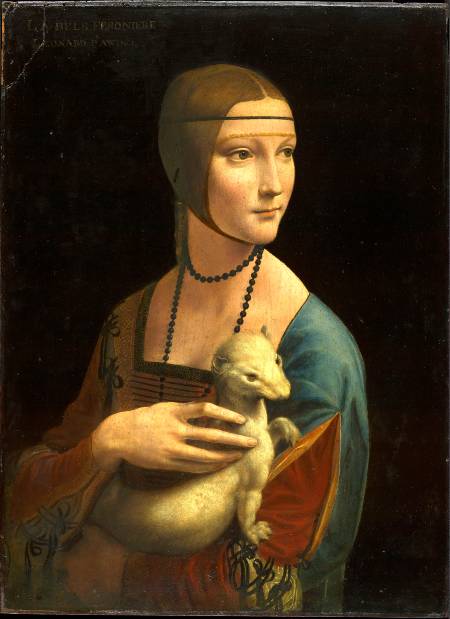
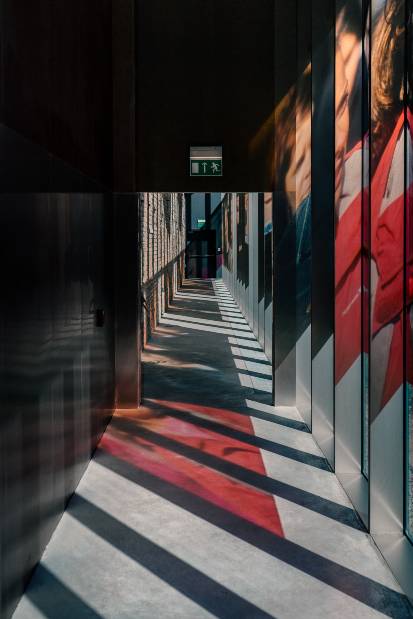
MOCAK Museum of Contemporary Art
The MOCAK Krakow Museum of Contemporary Art is located in the Schindler’s Factory complex, in a neo-modern style building which houses both permanent and temporary exhibitions.
It represents the main center of contemporary culture of the city with works by various Polish and international artists of the last twenty years, including F. Tomasz Bajer, Edward Dwurnik, Krištof Kintera, Ragnar Kjartansson, Jarosław Kozłowski, Robert Kuśmirowski, Lars Laumann, Bartek Materka, Maria Stangret, Beat Streuli, Krzysztof Wodiczko. The museum also has a library with a large collection of art books, a reading room and a small cafe.
Part of the MOCAK Library is dedicated to the avant-garde and contemporary art critic Mieczysław Porębski, with a small reconstruction of his studio with an exhibition of works and books that reflect his artistic and scientific passions.
Manggha Museum of Japanese Art and Technology
The Manggha Museum in Krakow is one of the city’s most renowned cultural institutions, holding a significant position as one of Europe’s foremost oriental art museums. Established through the visionary initiative of director Andrzej Wajda, the museum’s creation was made possible by his receipt of the prestigious Kyōto Prize – a Japanese award recognizing exceptional achievements in art and science, akin to the Nobel Prize. Displaying his commitment to Japanese art and technology, Wajda generously donated the entire prize amount towards the construction of this new museum in Krakow.
The architectural masterpiece that houses the Manggha Museum was a collaborative effort between the celebrated Japanese architect Arata Isozaki and local architects. This blending of expertise resulted in a striking representation of contemporary architecture.
Within its walls, the Manggha Museum holds a treasure trove of oriental art, generously donated in 1920 by the renowned collector Feliks Jasieński, who was known by the pseudonym Manggha. The museum’s exhibits showcase an impressive array of paintings, woodcuts, ceramic artifacts, costumes, fabrics, weapons, and other captivating objects that offer a deep insight into the richness of Japanese art and culture.
Oskar Schindler’s Factory
The story of Oskar Schindler and his enamel factory, situated in the old industrial district between Podgórze (the former Krakow Ghetto) and Kazimierz, was immortalized in Steven Spielberg’s renowned film Schindler’s List. Oskar Schindler, a German entrepreneur, demonstrated remarkable courage during the Nazi occupation of Krakow by saving the lives of numerous Jews through employment in his factory.
Today, this historic Oskar Schindler Factory has been transformed into a museum, featuring a compelling permanent exhibition that uses objects, documents, recordings, photographs, and reconstructions of the Ghetto to provide deep insights into Krakow’s history during World War II and the Nazi occupation. Visitors are confronted with the harrowing experiences endured by Jews during that dark era.
To gain a comprehensive understanding of the site, it is highly recommended to book a guided tour, which is the best way to fully comprehend the historical significance of what you encounter during your visit.
There are also excellent guided tour available that not only include a visit to Schindler’s Factory but also take you to other notable places in the Krakow Ghetto and the Płaszów Concentration Camp, both featured in the film Schindler’s List.
Pharmacy Museum
The museum extends over 5 floors of an ancient building and tells the history of pharmacy and pharmaceutical technology through a huge collection of old laboratory equipment, furniture, rare pharmaceutical tools, jars, barrels, medical books and documents.
Part of the museum is dedicated to the story of Tadeusz Pankiewicz, a pharmacist who became famous for his resistance during the Nazi occupation of Krakow. His “Pharmacy Under the Eagle” remained the only pharmacy left open in the Krakow Ghetto, and he was the only non-Jewish Pole who continued to live and work there.
Pharmacy Under the Eagle Museum
Located within the old Krakow Ghetto, in the Podgórze district, this old pharmacy once known as the “Pharmacy Under the Eagle” is now one of the most famous museums in Krakow.
Its history dates back to the period of the Nazi occupation of Krakow, when its owner at the time, the Polish Tadeusz Pankiewicz, decided to continue running his pharmacy, located within the Jewish ghetto, refusing to leave the neighborhood.
It was the only pharmacy that remained open in the ghetto and quickly became a meeting point and a safe place for prisoners. In fact, his owner and staff saved countless lives by helping Jews hide and survive. Today the pharmacy has become a museum. Rebuilt and restored as it was at the time, it houses a permanent exhibition dedicated to remembering its history and that of the Krakow Ghetto, through objects, stories and multimedia exhibitions that tell the life of Jews in the Ghetto and how Pankiewicz tried to help them to resist.
Stained Glass Museum
More than a museum, it is a real glass workshop! Founded in 1902 by the Polish artist SG Żeleński, it became the place where many artists, such as Józef Mehoffer and Stanisław Wyspiański created their best works. Inside, a part is still occupied by small craftsmen, who allow you to admire the creation of their works. You can see how glass works and you can be told interesting explanations on the different methods that allow you to obtain the various shapes and colors of the glass.
In the exhibition space, on the other hand, beautiful masterpieces from the late 20th century are exhibited, when the Art Noveau exploded in Krakow. The exhibition itinerary also includes a small explanation of the glass production process, accompanied by wonderful stories told by the guides.
Polish Aviation Museum
One of the best aviation museums in Eastern Europe. Located just outside the city on the site of the abandoned Rakowice-Czyżyny Airport, it boasts a large collection of historic aircraft, helicopters, gliders, engines and missiles through which it tells the history of aviation.
The collection includes some of the most important historical aircraft of military and civil aviation, both from Poland and from many other countries in the world, including an interesting collection of aircraft used during the First and Second World Wars.
Gallery of The 19th-Century Polish Art
The museum is located inside the Sukiennice, in the heart of Krakow’s Main Market Square, and is part of the National Museum of Krakow. It exhibits some works of 19th century Polish art, including paintings by Michalowsky, Gierymski and also by Jan Matejko, one of the most famous painters in Poland.
The four exhibition rooms are divided by theme and historical period: the Bacciarelli Room represents the classical style, the Michałowski Room dedicated to romanticism, the Siemiradzki Room to nature and Greco-Roman portraits and finally the Chełmoński Room with works of realism. From the gallery it is also possible to access a magnificent terrace with a small café and a beautiful view of the Main Market Square.
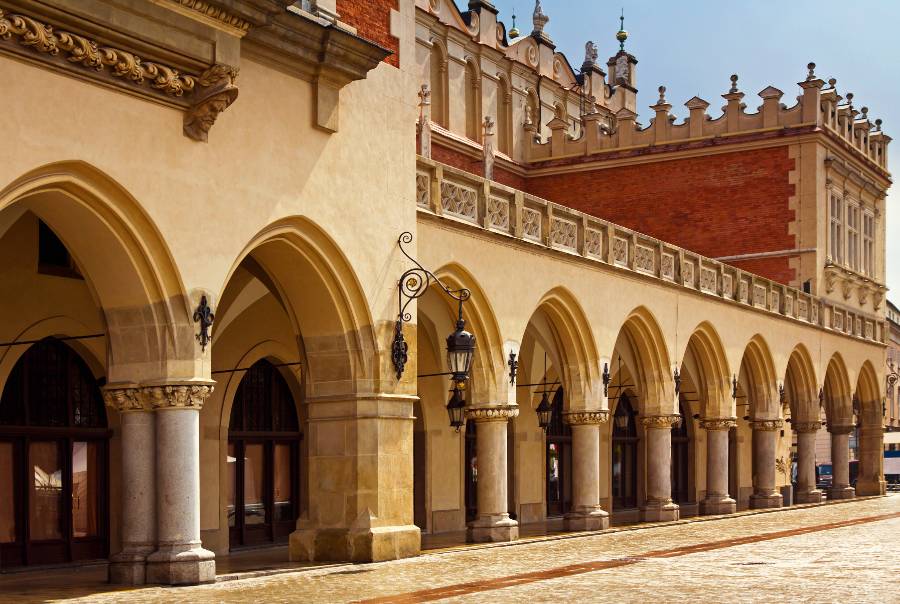
Krakil – Museum of Illusions Kraków
Illusion, science, and art converge within this museum to create a captivating and educational experience. This museum in Krakow offers a delightful journey through well-organized rooms, each housing a variety of activities designed to deceive the senses using tricks of light, perspective and scientific inventions, as well as showcasing real works of art. The visit lasts approximately a couple of hours, and as you explore the museum staff will provide you explanations and intriguing curiosities while allowing you to capture incredible photos with some of the most bizarre illusions present in the museum.
It brings together physics, optics, mysterious artworks and classic puzzles to offer a unique and enriching educational experience. You’ll have the opportunity to engage in activities such as drawing with light, creating shadows, and experiencing unforgettable moments in an upside-down world. Moreover, this place is a haven for social media enthusiasts, as it provides numerous instagrammable spots where you can capture intriguing pictures and make captivating videos.
Krakow Pinball Museum
This is a place that nostalgics of the roaring ’80s should not miss! Hidden inside a gallery, the museum is a blast from the past dedicated to one of the most famous games of the 20th century: pinball. The museum offers a huge variety of pinball machines, ranging from the oldest to the most recent and technologically advanced, some even themed after popular franchises like Spider-Man, Indiana Jones, or Star Wars. Additionally, there is a wide selection of other classic video games, such as Pac-Man and Super Mario.
With the entrance ticket, you get the opportunity to play all the video games unlimited, without the need for further payments for tokens or coins. While you play, you can also relax with a drink at the museum’s lounge bar.
National Museum in Krakow
The National Museum of Krakow was founded in 1879 and today has more than 700.000 works from national and international artists, including paintings, sculptures and precious objects.
It is made up of various small thematic museums located throughout the city. The main museum is located in the western part of the city, in a large building called Gmach Głowny (Main Building) and houses the largest exhibition space with three permanent exhibitions:
- the 20th century Polish Painting Gallery with works by great artists such as Witkacy, the drawings for polychrome stained glass by Stanislaw Wyspiansky and the works of the painter Olga Boznanska, famous throughout Europe;
- the Artistic Handicraft Gallery which allows you to appreciate the decorative art of Polish and Western European artistic craftsmanship.
- The Weapons and Uniforms Gallery, with a collection of the most precious Polish uniforms and weapons from the Middle Ages to the Second World War.
Below we recommend some other important museums that are part of the Krakow National Museum. They can all be visited for free with the Krakow City Card.
The Jan Matejko House
The museum is situated in Krakow Old Town, within the very house where the renowned Polish artist Jan Matejko once resided. The exhibition, partly furnished with original furniture, offers an intriguing journey through the artist’s life as a father, traveler, and collector. Visitors will have the opportunity to view personal objects, letters, and precious jewels that once belonged to the painter, as well as admire some of his finest masterpieces.
Wyspianki Museum (Szolayski House)
The Wyspiański Museum in Krakow is dedicated to the renowned painter Stanisław Wyspiański, one of the most significant artists of both Krakow and Poland during the 19th and 20th centuries. He gained fame for his exceptional contributions to various artistic and literary domains.
The museum’s rooms provide an authentic glimpse into the living conditions of the time, as they have been meticulously preserved in their original state. The exhibition at the museum narrates the life and artistic journey of Stanisław Wyspiański. It showcases an array of sculptures, handicrafts, stained glass projects, portraits, and self-portraits. Among the highlights is a model of the Royal Palace on Wawel Hill, representing his vision for its reconstruction to serve as the primary political, cultural, and religious center of Poland.
Mehoffer House
The museum is dedicated to Jòzef Mehoffer, a prominent Polish painter and one of the main exponents of the “Young Poland” artistic movement. This movement emerged in opposition to positivism, promoting an artistic style inspired by Art Nouveau, romanticism, and symbolism.
Inside the museum, visitors can explore a captivating display of Mehoffer’s works and artifacts, as well as a beautiful private collection of paintings from the Far East. The house is also renowned for its beautiful garden, which had been abandoned after the Second World War. However, in 2004, after a meticulous renovation, it was reopened to the public. Now, the garden features a small café called Meho Café, providing visitors with a pleasant spot to relax and enjoy their time.
Czapski Museum and Pavilion
The Czapski Museum and Pavilion is another small museum in Krakow and one of the esteemed branches of the National Museum of Krakow. Within its walls, visitors can indulge in a captivating collection of photographs, documents, compasses, prints, and ancient geographical maps.
One of the museum’s noteworthy sections is devoted to the celebrated artist and army officer Czapski, showcasing his invaluable collections of coins, medals, and banknotes. This exhibit offers a fascinating glimpse into the world of numismatics and the artistic passions of a remarkable individual.
Ciolek Palace
Situated near the Wawel Castle, the Ciolek Palace was constructed in the early 16th century by Bishop Erazm Ciolek. Inside, it houses two magnificent religious art galleries. On the ground floor, visitors can explore the works of Orthodox art from the old Polish Republic, while the rooms on the first floor showcase a fine collection of Polish art spanning from the 12th to the 18th century. Notably, among the exhibited pieces, make sure not to miss the renowned “Beautiful Virgin Mary from Krużlowa“ and the captivating “Christ in the Garden of Gethsemane” by Veit Stoss.
Europeum
The Europeum is another small but captivating art museum in Krakow, housed within an ancient 16th-century granary situated near the main square. This charming establishment boasts an impressive collection of Western European art, showcasing masterpieces such as Paolo Veneziano’s “Crucifixion” and Brueghel’s “Sermon of Saint John the Baptist”.
With its unique and historical setting, Europeum offers visitors a delightful experience of both art and architecture. Its collection of artworks provides a fascinating glimpse into the rich cultural heritage of the region, making it a must-visit destination for art enthusiasts. The museum’s proximity to the main square makes it conveniently accessible and a nice addition to any itinerary exploring the cultural wonders of Krakow.
Nowa Huta Museum and Nuclear Bunkers from the Soviet Era
Nowa Huta district is one of Krakow’s lesser-known attractions, but it’s a true gem of socialist architecture, offering a unique opportunity to experience life in Poland during the socialist era. The Nowa Huta Museum is housed in the historic building of the former Kino Światowid cinema, dedicated to the history of the Communist People’s Republic of Poland. Inside, you’ll find a captivating display of photographs and objects that provide insights into the life and culture of Socialist Poland, as well as the history of the Nowa Huta neighborhood.
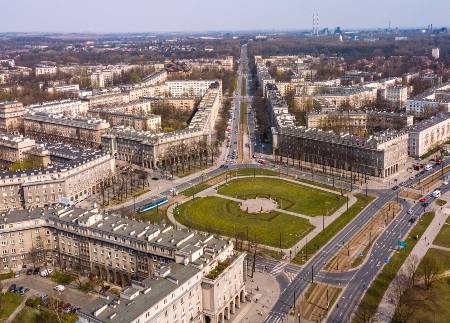
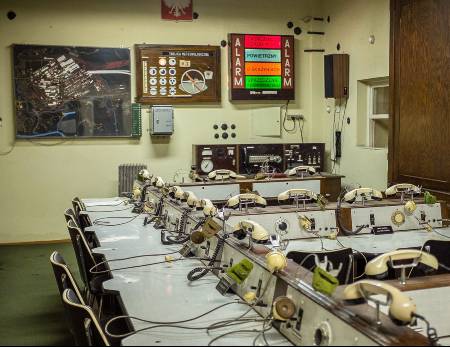
Beneath the surface of Nowa Huta, you can explore the “Nuclear Threat: Shelters of Nowa Huta” exhibition, which is part of the Nowa Huta Underground project. This unique experience allows you to visit structures designed as nuclear attack shelters during the Cold War.
For an even more exciting visit to Nowa Huta, consider joining one of the guided tours from Krakow, led by passionate local guides. Your guide will take you on a nostalgic journey in a vintage car from Krakow to Nowa Huta, unveiling the hidden gems of this incredible neighborhood, including its underground bunkers.
Ethnographic Museum in Krakow
The Ethnographic Museum in Krakow is undeniably one of the most interesting museums in Krakow. Situated in the heart of Kazimierz, within the historical walls of the old Town Hall, the museum provides an immersive experience into the culture and folklore of the local community. Although it may not be as well-known among tourists, it offers a unique opportunity to explore the vanishing customs and traditions of various peoples.
In the medieval era, Kazimierz was a distinct town, and the museum beautifully reflects the region’s rich history. Visitors can delve into Polish folk culture as they stroll through meticulously recreated 19th-century peasant interiors, marvel at the craftsmanship of handcrafted tools, and admire traditional costumes, among many other intriguing exhibits.
In today’s globalized world, cultural customs are rapidly fading away, making the Ethnographic Museum all the more precious for preserving and celebrating the heritage of the past. For those eager to glimpse the essence of Poland as it appeared up to the early 1900s, this museum is an absolute must-visit.
Wawel Hill Museums in Krakow
Wawel Hill stands at the heart of Krakow’s culture: it once housed the Royal Palace and Royal Cathedral, where Polish kings were crowned. Today, this historic site has transformed into a fascinating complex of museums.
The Wawel Cathedral preserves the tombs of kings, heroes, and poets, and also hosts museums and exhibitions featuring religious art. At Wawel Castle, visitors can explore various exhibitions and museums, showcasing impressive collections of tapestries, weapons, treasures, and jewels. Additionally, there is the opportunity to marvel at the opulent interiors of the state rooms.
Keep in mind that visiting the museums on Wawel Hill requires purchasing separate tickets for each museum. To make the most of your experience, it is often beneficial to book a guided tour with a licensed guide.
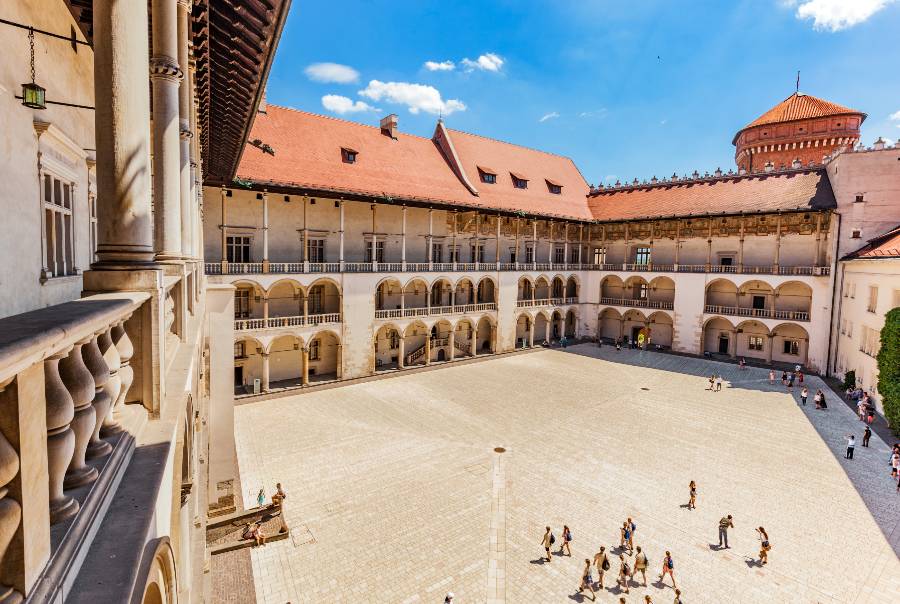
Szymanowski Museum
Nestled at the base of the majestic Tatra Mountains in Zakopane, a town just a few hours’ drive from Krakow, lies the exquisite Szymanowski Museum. Housed within the Villa Atma, a charming old wooden building embodying the traditional Zakopane architectural style, the museum once served as the residence of the renowned pianist and composer, Karol Szymanowski.
The museum offers a captivating exhibition of photographs, sheet music and pianos, offering visitors a fascinating glimpse into the life and legacy of this extraordinary artist and his profound love for music. During the summer months the museum also treats its visitors to delightful outdoor concerts, staged in the enchanting garden setting.
Auschwitz Museum
No visit to Krakow is truly complete without a solemn journey to the Auschwitz and Birkenau Concentration Camps, situated approximately 80 km from the city. This place, once a haunting symbol of Nazi horror, now stands as the most significant museum worldwide dedicated to the history of the Holocaust. It holds the honor of being inscribed on the UNESCO World Heritage list. This journey is a profound and emotional experience, but it serves as a crucial reminder of the atrocities of the past and the importance of preserving history for future generations.
To visit the Auschwitz Museum, you have two options. You can book a guided tour from Krakow, which includes transportation, an official guide proficient in your preferred language, and visits to both Auschwitz and Birkenau camps. Alternatively, you can plan the trip independently, but do keep in mind that advance booking is absolutely essential! To help you plan your visit, we’ve provided all the necessary information you need on how to visit Auschwitz.
Wieliczka Salt Mines
Undoubtedly, the Wieliczka Salt Mines are one of the most extraordinary and captivating museums in the world: an underground art gallery adorned with sculptures, cathedrals, and statues, all entirely made of salt. Situated just a few kilometers outside Krakow, these mines are among the oldest in the world. During the Middle Ages, they played a significant role in making Krakow one of the wealthiest and most prosperous cities in Europe.
This vast underground labyrinth comprises hundreds of kilometers of tunnels that wind hundreds of meters deep. Over centuries of dedicated work by passionate miners, it has transformed into a marvelous underground world filled with enormous halls, cathedrals, underground lakes, grand stairways, and even a restaurant.
Nowadays, the Wieliczka Salt Mines are open for visitors to explore in complete safety, making it a must-see attraction in Krakow. You can find all the necessary information to visit the Wieliczka Salt Mines from Krakow here.
Useful Tips for Your Trip to Krakow
Planning your trip to Krakow? These are our in-depth guides with everything you need to know to plan an amazing trip to Krakow: